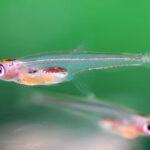INTRODUCTION
Penguins are one of the world’s streamlined and sociable creatures both on land and at sea. They belong to the aves class of the Animalia kingdom.
Except for Galapagos penguins, almost all species are native to the southern hemisphere.
These flightless seabirds live not only in Antarctica but rather between latitudes 45 to 60 degrees South. Though they are birds, penguins don’t have wings to fly but have flippers to swim which makes them excellent swimmers and divers.
The penguin have distinctive body features that make them attractive. All penguin have black backs and white bellies with strong flippers. African penguins have black stripes and spots on their chest.
Penguins eat krill, fish, squid and other small animals from oceans. Emperor penguin and king penguins only lay one egg while all other species lay two eggs. Gentoo penguin are the speediest penguins, can top 20 mph, but most species are around 4-7 mph. Penguin survive on various sea life that they catch underwater.
TYPES OF PENGUINS:
There are different kinds of species of penguins that are found in various parts of the world. Some of the species prevalent in the Antarctic region and other places are hereunder mentioned:
- EMPEROR PENGUIN
Emperor penguins are the largest species of penguin which are commonly found in Antarctic ice and its waters. They have aerodynamic bodies, their head and dorsal side are black and delineated from white belly having pale yellow breast, bright yellow ear patches and strong flippers. The male and female penguin are virtually identical and similar in size and vary in weight from 22-45 kg.
SURVIVAL AND REPRODUCTION
Emperor penguins live in a cold atmosphere but can survive in low temperatures of the Antarctic also. They huddle close together in large groups forming a circle that keep themselves and each other warm. They keep changing their position on a rotation basis to protect themselves from the cold. Their diet consists of fish, krill, squid and other sea life they catch underwater. They fell prey to other Antarctic animals such as leopard seals and killer whales. Only one-third of juvenile penguin will make it their first year as they fall prey to seabirds like giant petrels or skuas.
Emperor penguins breed in the winter. After the female emperor lays a single egg she leaves and the egg’s father balances it on his feet and covers it with a pouch that keeps the egg cosy. Male emperors stand for about 65 days and lose almost 40% of body weight. When female penguin return to the breeding site, they bring food for the newly hatched chicks. As the youngsters grow, they head to the ocean for the fish.
- KING PENGUIN
The king penguin is the second largest species of penguin after emperor penguin.
There are two subspecies viz. A. p. patagonicus, mainly found in the South Atlantic and A. p. halli, found in the south Indian Ocean. The king penguin weighs around 9.3 kg to 18 kg and is approximately 25% shorter and 33% less weight than emperor penguin.
The king penguin has a longer, straighter bill, larger flippers and sleeker body than emperor penguins. Both appear similar at first glance but they can be distinguished by cheek patch and upper chest as king penguin have a solid bright orange patch and more orange and less yellowish upper chest than emperor penguins.
These can be distinguished from other species by their much larger frame and distinctive colourful marking.
SURVIVAL AND REPRODUCTION
King penguins eat squid and crustaceans and all their diet is mainly made up of fish, for their survival.
Adults and juveniles fall prey to leopard seals and killer whales, whereas giant fulmars, skuas, and snowy sheathbills prey upon eggs and chicks. Most king penguin breed twice in three years and a single egg takes a 14 -18 months cycle.
The success or failure of breeding depends upon previous attempts. To attract a female, a male engages in a behaviour in which he produces a trumpet call and stretches his head upward to look as tall as possible.
The pair remains monogamous and have a mate for a lifetime. The chick was light brown till he came to the stage of maturity. Once a young king penguin does leave its colony, it will not return until it’s able to mate.
- ADELIE PENGUIN
The Adelie penguin is one of the most southerly distributed of all seabirds along with emperor penguins. These can be distinguished from other species by white rings around their eyes. They have a black back and head with a white chest and belly. They are the smallest species of penguins in the Antarctic region but they are known to take on potential predators or even known for attacking researchers with their flippers.
SURVIVAL AND REPRODUCTION
The main source of food for Adelines are krill, small fishes and occasionally feeds on jellyfish with visible gonads.
They fell prey to leopard seals, south polar skuas and giant petrels. Kelp gulls and snowy sheathbills also prey upon chicks and eggs. Male sidelines attract females by building the biggest and best nest. To do this they need small rocks which they collect from their surroundings, if they think that their nest lacks rocks or even that their nest is not the best one, they will steal rocks from their neighbours’ nest. Adelie penguins breed from October to February on the shores of Antarctica and it takes 32 to 34 days for incubation. Chicks of Adelie penguins will not return to their colony until they can breed.
- CHINSTRAP PENGUIN
The chinstrap penguin is also known as a ringed, bearded penguin because of its loud noisy calls. They are mainly found in rocky Antarctic islands and the southern ocean. Chinstrap penguins have a white face and a thin, black line that runs under the chin. Their weight varies from 3-6 kg and is 60-68 cm in height. They have a lifespan of 15-20 years. They are considered as one of the most aggressive penguin species when it comes to defending against other species. The chinstrap penguin is very social and can be found in colonies of sidelines
SURVIVAL AND REPRODUCTION
The diet of chinstrap penguins includes fish, squid, krill and shrimp. As krills are abundant in waters near southern oceans, the majority of its dieting comes from this. The main predators of chinstrap penguins are leopard seals, sea lions, sharks and killer whales. The eggs and chicks fell prey to skuas and predatory species. The chinstrap penguin breeds mainly from November to march. They lay two eggs and it takes 37 days. The baby chick stays for a month with its parents. It takes around 50-60 days to get adult feathers and go to the sea.
- GENTOO PENGUIN
The gentoo penguins are closely related to the Adelie and the chinstrap penguins. Gentoo penguins have red-orange beaks, white feather caps, and peach-coloured feet that help them to stand out among other species of Antarctic habitat. They weigh around 12 pounds and their size is relative to a 6 feet man. They have streamlined bodies and strong flippers that help them to swim faster than any other diving bird.
SURVIVAL AND REPRODUCTION
They prey upon fish, squid and krill and can remain below for 7 minutes and 655 feet deep under the water. Although leopard seals, sea lions and orcas are a threat to the survival of this species. Gentoo penguins breed on many sub-Antarctic islands. They breed monogamously and any infidelity is not tolerated and punished with banishment from the colony. A male gentoos impress a female by building nests from the pile of stones and their ownership is protected, subject to noisy disputes among individuals. The parents share incubation and protect their chicks from falling prey. The eggs take around 34-36 days from hatching.
- GALAPAGOS PENGUIN
The Galapagos penguin is the only species found near the equator. They have feathers on their back, heads are black and have a white belly and a stripe from their eyes to their neck and chin. They are the smallest species of penguins. They are mainly found in the region near the equator in Galapagos island, Ecuador. Only these species are found near the equator and subsequently, found their ways to keep themselves cool in a temperate region. The cool waters of Humboldt and Cromwell currents make their survival easier in tropical latitude.
Alt: Galapagos penguin; Description: penguin standing at the seashore.
SURVIVAL AND REPRODUCTION
Their survival depends upon small fish, mainly mullet and sardines. They breed only in a cold region, and along nutrient-rich currents to bring them food. Their population is decreasing due to scarcity of food and changing environment leads to unsuccessful breeding. Galapagos penguins remain monogamous and loyal to each other. They protect their eggs from overheating by laying one or two eggs in caves. It takes around 38-40 days for incubation.
CONSERVATION STATUS ACCORDING TO IUCN
The following table shows the conservation status of various penguin species and their population trend according to The International Union For Conservation of Nature (IUCN) red list.
| SPECIES | STATUS and POPULATION TREND |
| EMPEROR PENGUIN | Near threatened and decreasing |
| KING PENGUIN | Least concerned and increasing |
| ADELIE PENGUIN | Least concerned and increasing |
| CHINSTRAP PENGUIN | Least concerned and decreasing |
| GENTOO PENGUIN | Least concerned and stable |
| GALAPAGOS PENGUIN | Endangered and decreasing |
NEED TO CONSERVE PENGUINS.
According to IUCN status, the population of penguins are decreasing mainly due to climate change that makes their survival difficult. Changing the environment leads to less breeding and they are left with less food. The following step can be taken to prevent the extinction of penguins:
- Penguins are dependent mainly on seafood, while as a consumer there is a need to keep a watch on kinds of seafood to prevent scarcity for penguins.
- Climate change is one of the major causes of the decreasing population of penguins. Increasing carbon emissions leads to dynamic changes in the environment. Use of LED lights or turning off lights when not in use, minimum use of air conditioners will help in the reduction of carbon emissions.
- Human activities contribute more to the problem. Increasing marine activities leads to marine pollution such as oil spills, ocean mining, littering etc.
BY: AASHIKA GOYAL (29.10.2023)




